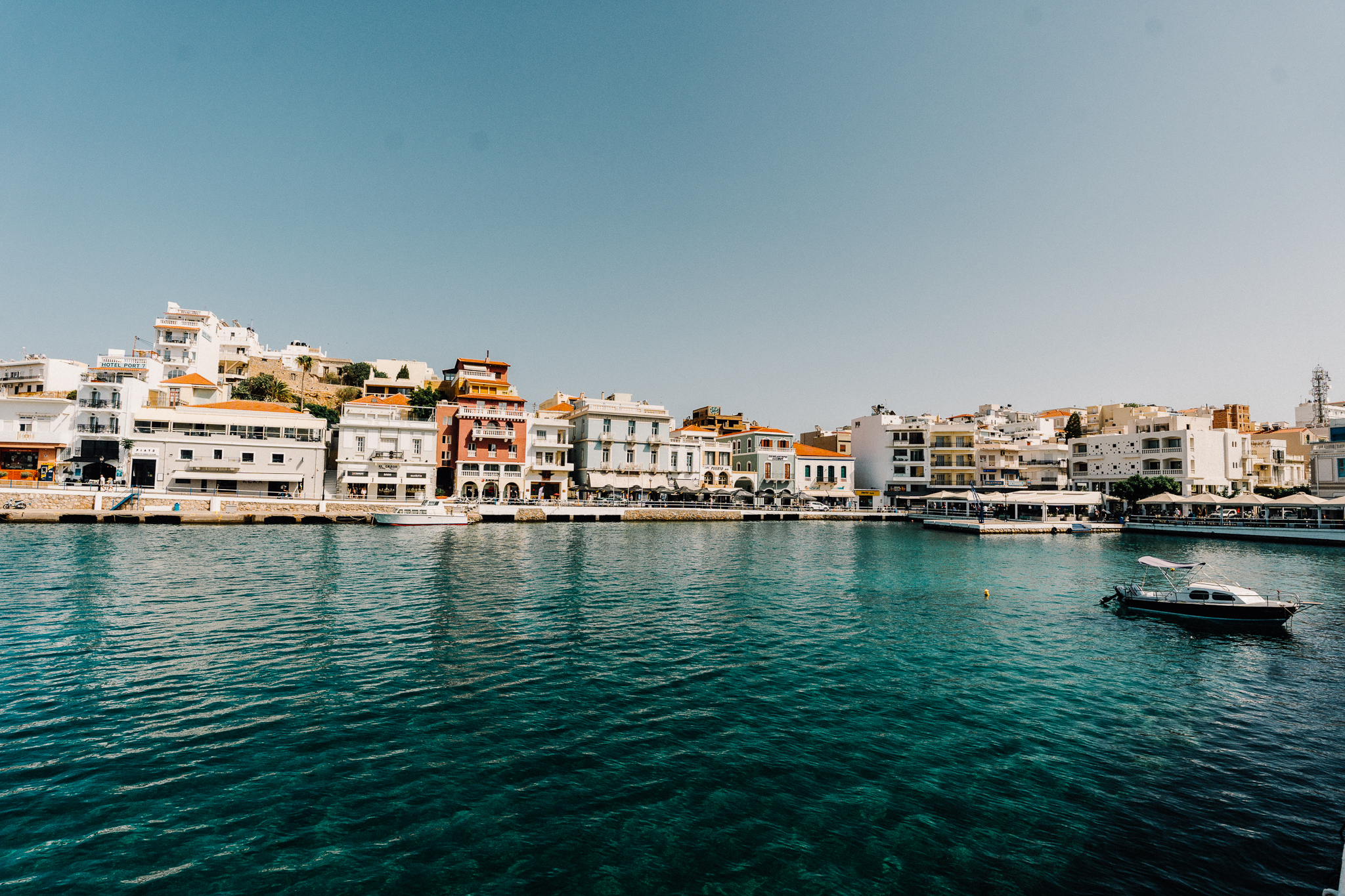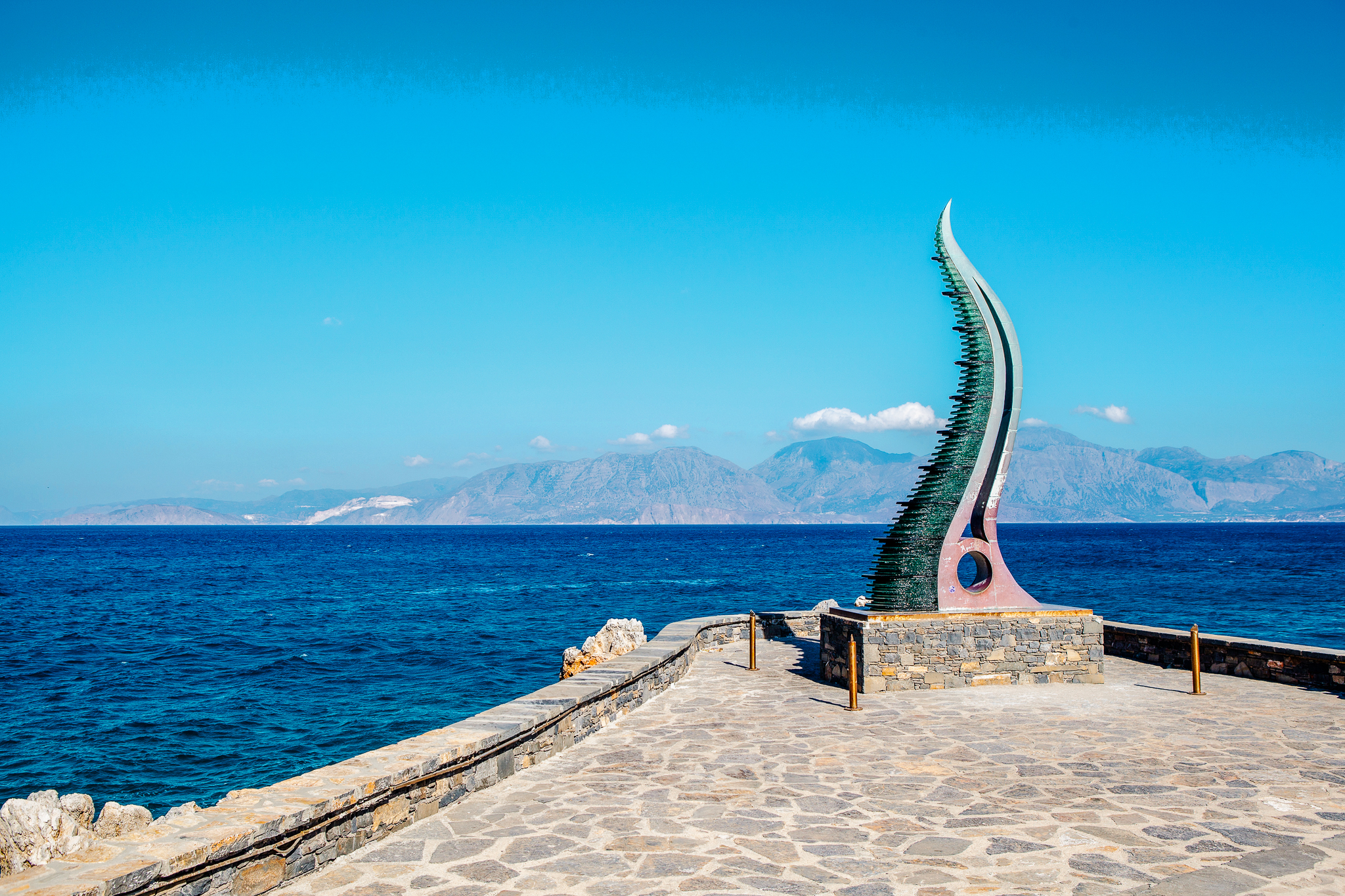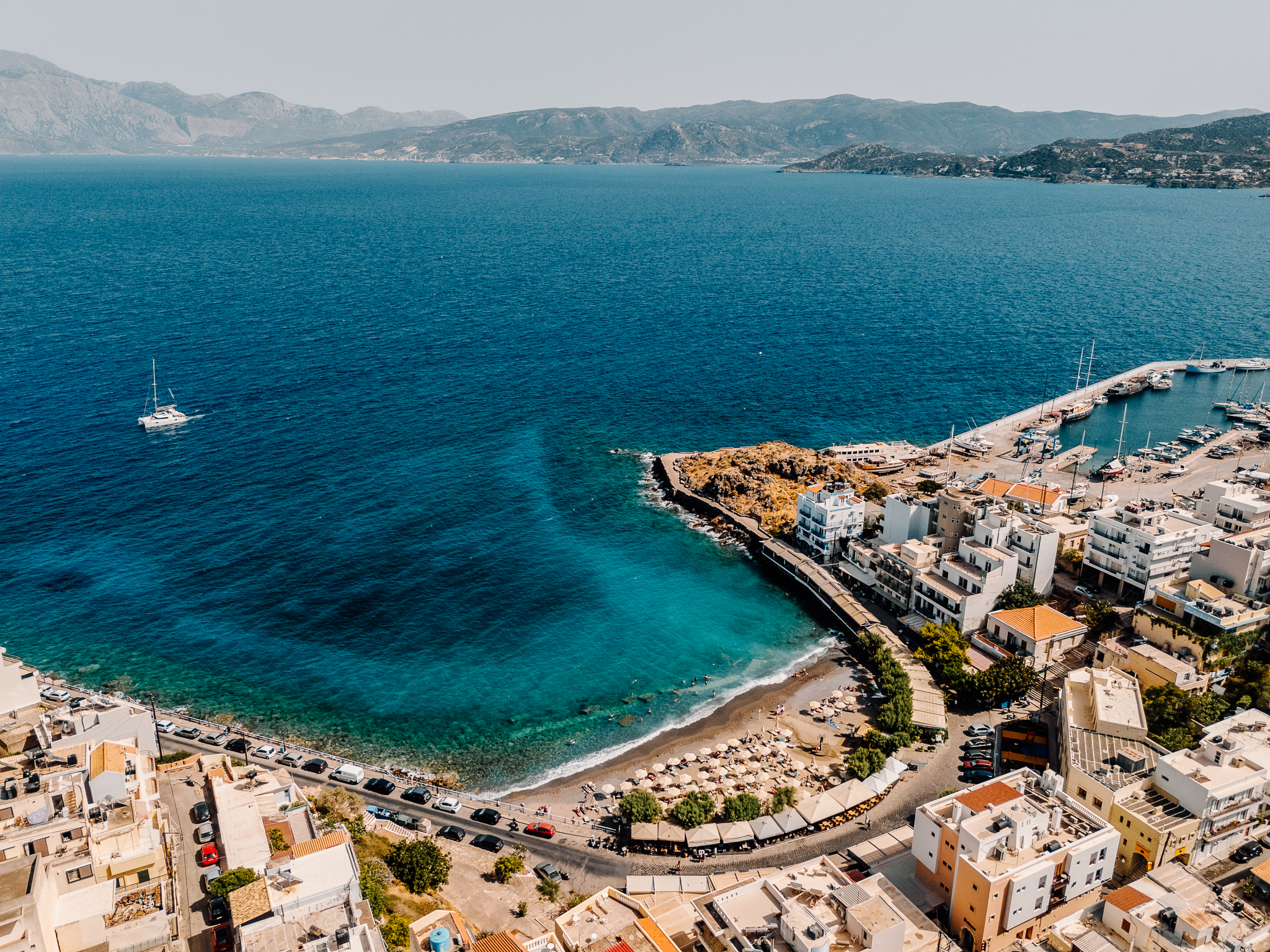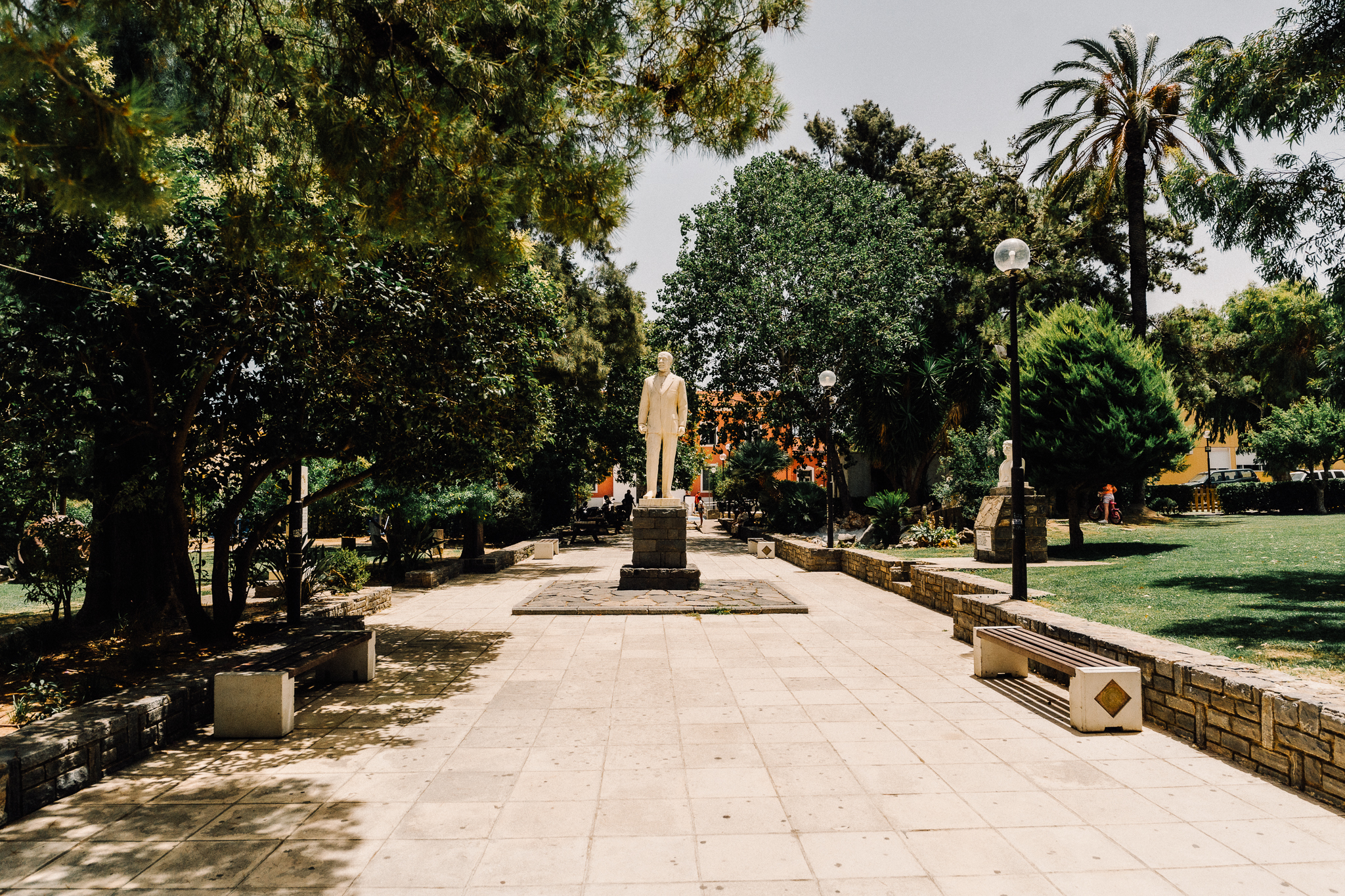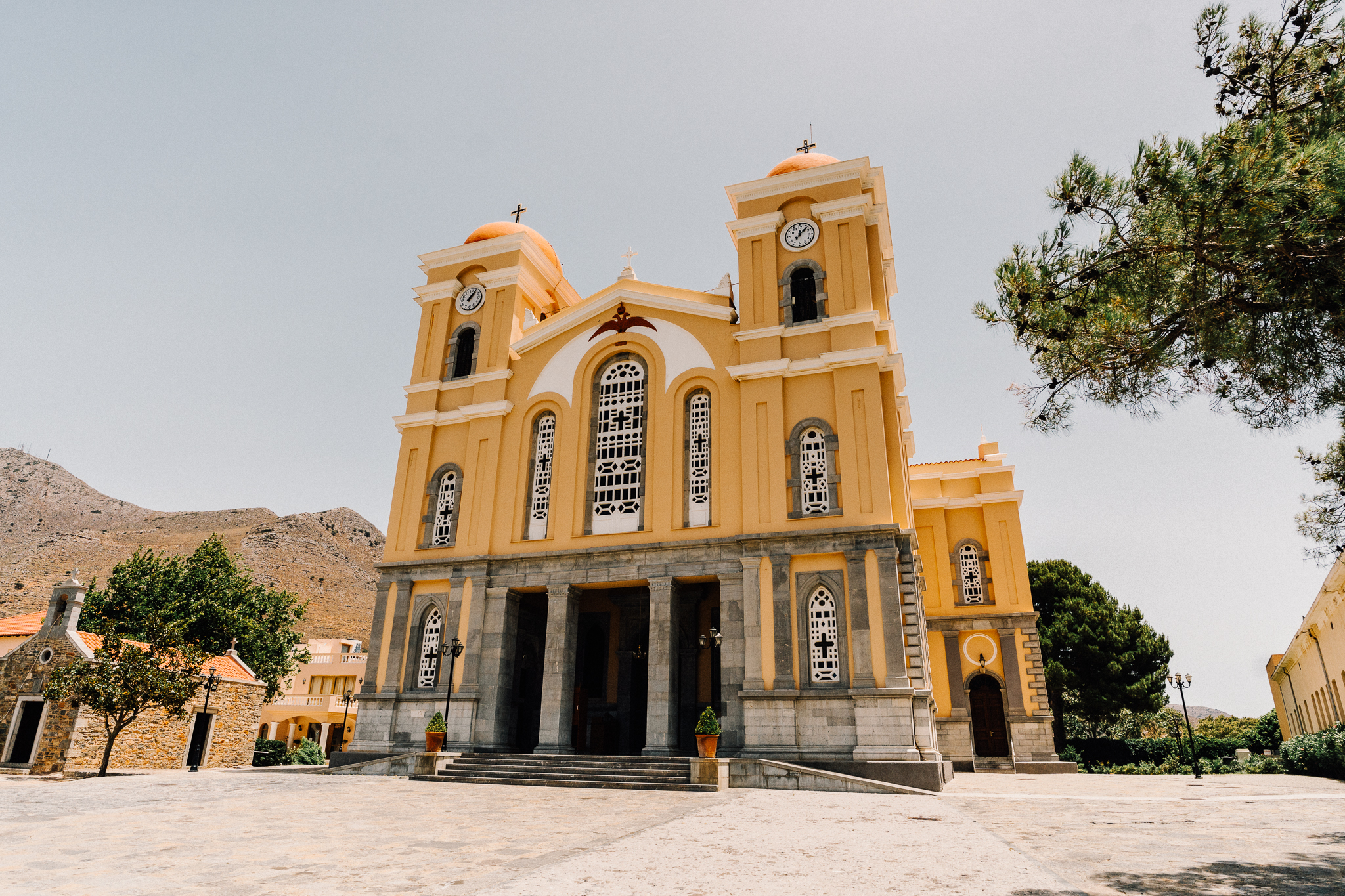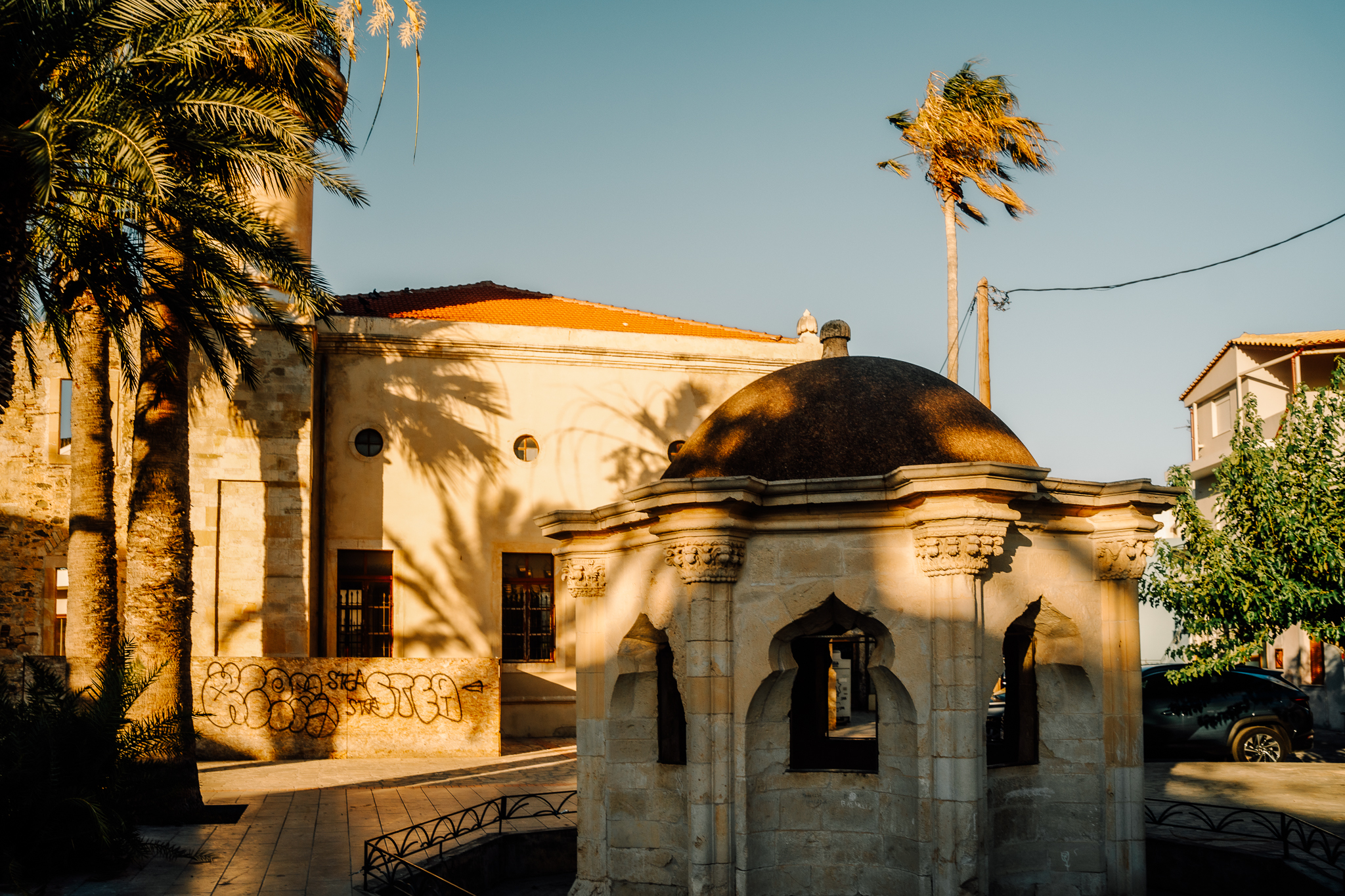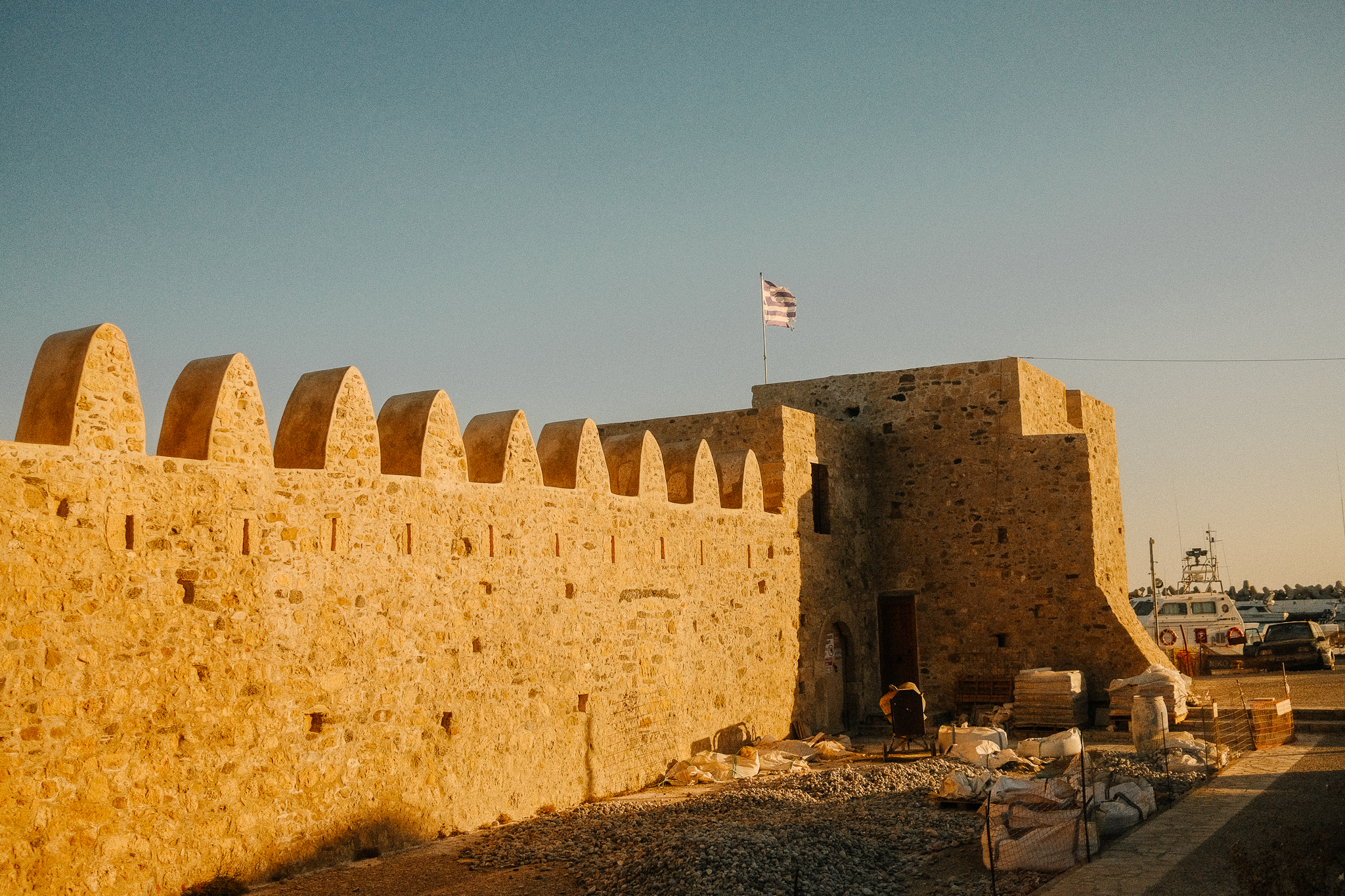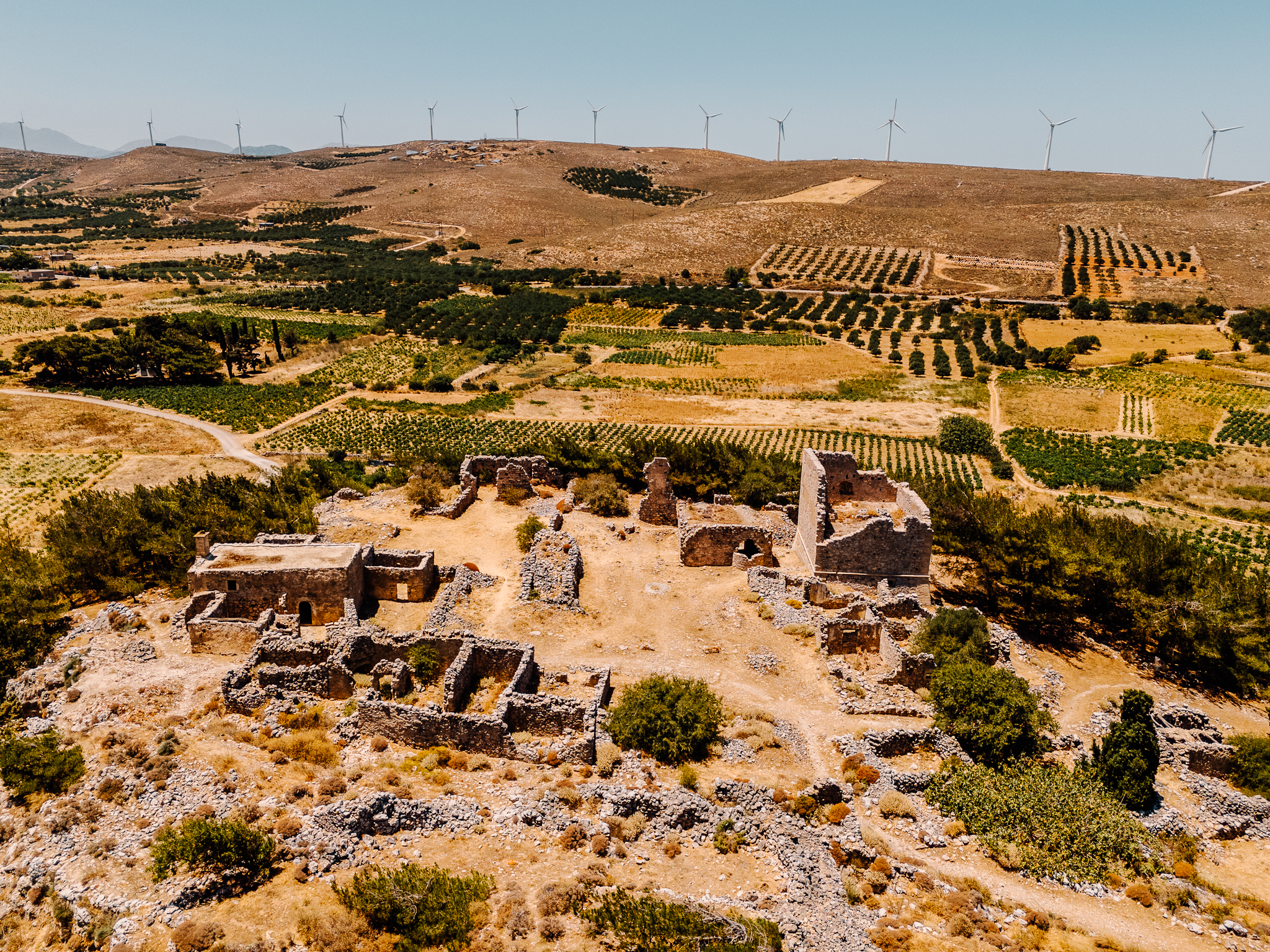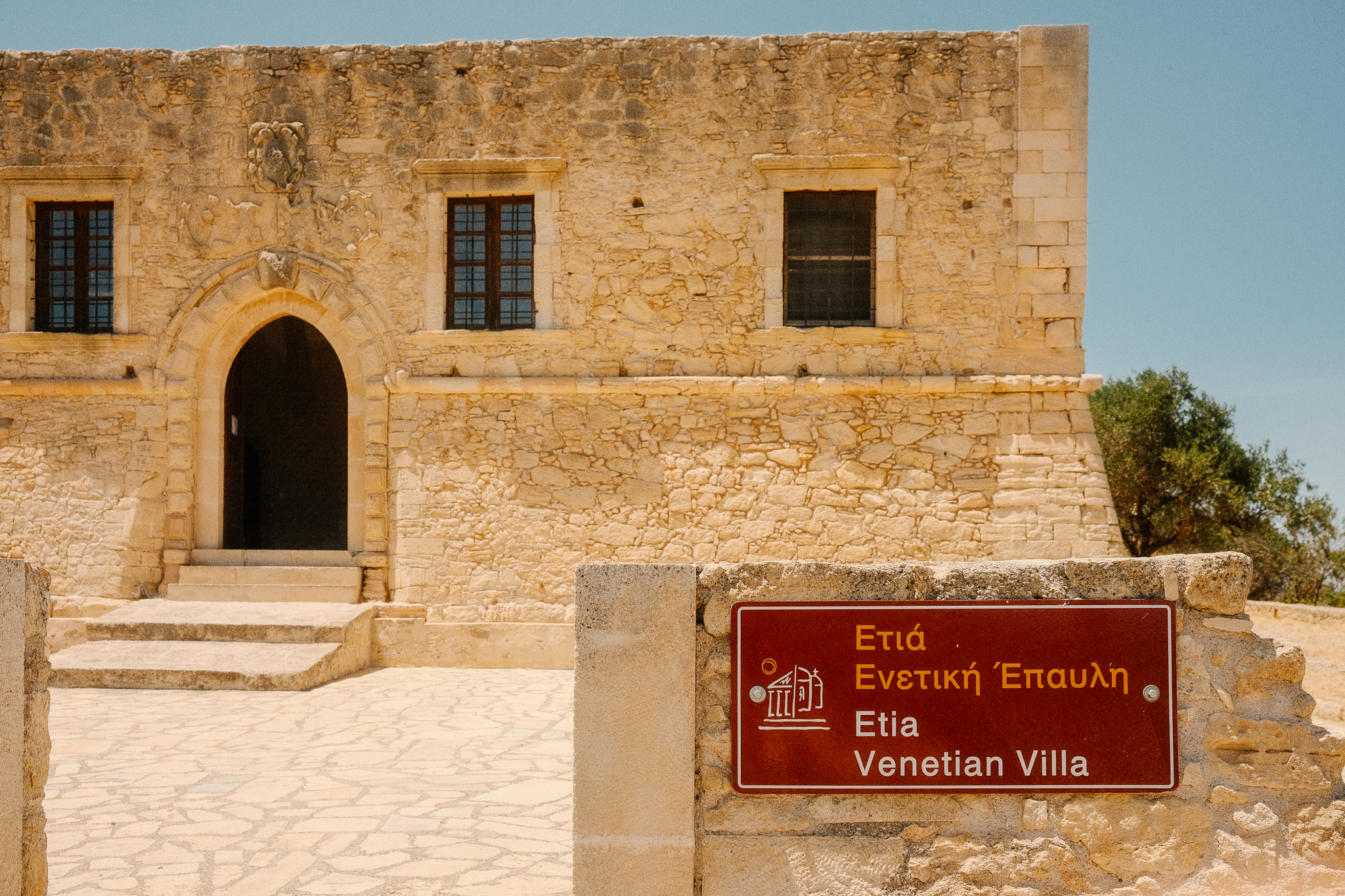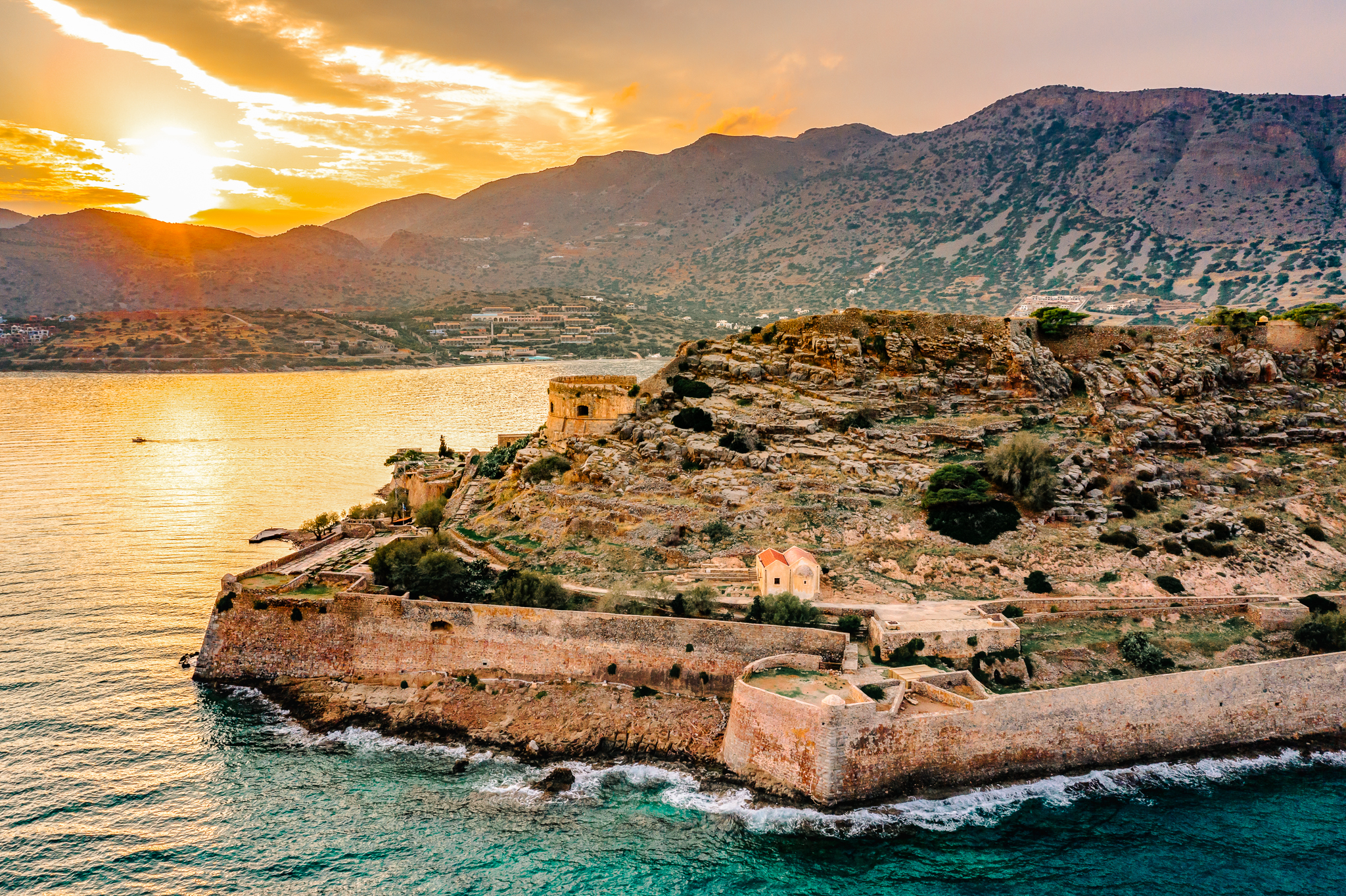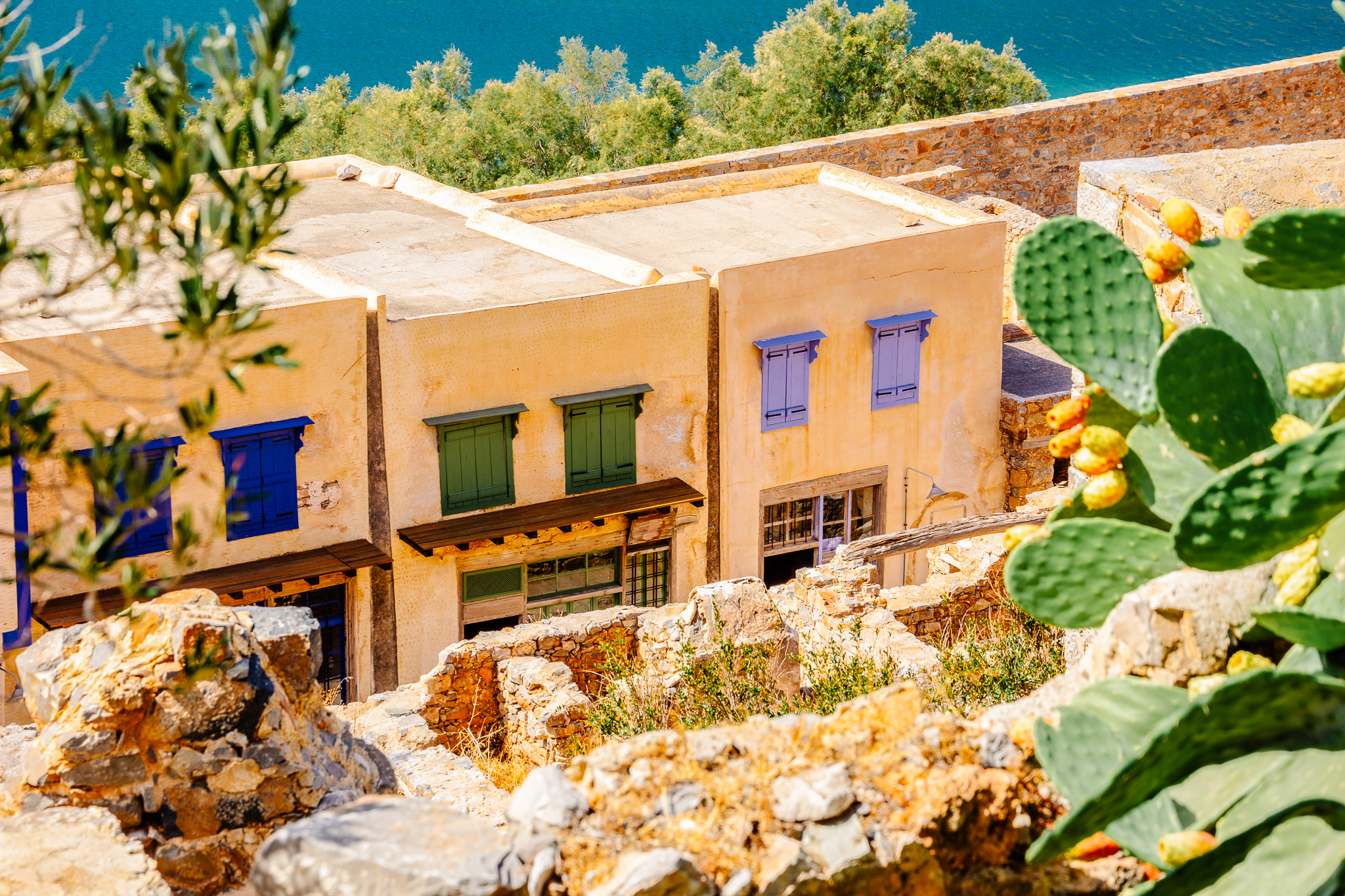A beautiful urban center built beside the famous Lake Voulismeni sits in northern Crete, on the western side of Mirabello Bay. Agios Nikolaos, the atmospheric capital of Lasithi, draws its charm from this unique natural landmark, a remarkable lake connected to Greek mythology. According to legend, goddesses Athena and Artemis once swam in its transparent waters.
Archaeological studies confirm the area was inhabited since Minoan times, with a settlement called Kamara occupying the site of modern Agios Nikolaos. Development continued centuries later with the Venetians, who built the famous Mirabello Castle. The settlement was completely abandoned during Ottoman rule, only to be reborn after the Greek Revolution.
This centuries-long history is visible across Lasithi’s stunning Cretan landscape, particularly in idyllic Agios Nikolaos, through remarkable attractions that reveal the area’s cultural journey. The city and surrounding area remain deeply connected to the historic Mirabello Castle, built by Venetians in the early 13th century on the hill where today’s Prefecture building stands. The fortress was named Mirabello, lending its name to both the province and the bay below. The original fortification was destroyed by a powerful earthquake in 1303 but rebuilt by Venetians, only to be destroyed again by Ottoman pirates in 1537.
Start your journey from the city center to admire views of Lake Voulismeni and its narrow channel connecting to the sea. Here, numerous fishing boats enhance the picturesque setting, while the beautiful marina on the other side of town invites visitors to admire the moored vessels. The entire city features charming squares worth your attention, like Kitroplatea, an iconic spot where a beautiful pedestrian street leads to the marina—perfect for sunset walks. The square’s name derives from the citron trade that brought centuries of economic prosperity to Lasithi.
Today, the city’s main economic drivers are olive cultivation and, undoubtedly, tourism, making Agios Nikolaos an attractive destination year-round. Every corner showcases distinctive local architecture, while statues throughout the city each carry special significance. Among these is the famous “Abduction of Europa” on the harbor pier, designed by director Nikos Koundouros and created by Nikos and Pantelis Sotiriadis. Another notable landmark is “The Horn of Amaltheia,” also by the Sotiriadis brothers, displayed in a stone courtyard against the backdrop of magnificent Mirabello Bay and Agion Panton islet. Exploring the city, you’ll inevitably notice the characteristic stairs connecting different areas. These stairs, decorated by the Athens School of Fine Arts and the Lasithi Architects Association, have become a trademark of Agios Nikolaos and part of its identity.
Beyond its own historical significance, Agios Nikolaos serves as an ideal base for exploring some of Crete’s most beautiful locations. From here, you can easily visit the fortified island of Spinalonga, used for many years as a leper colony, through daily trips organized by local travel agencies. A visit to nearby famous Elounda is an absolute must when in the area. In this place that combines natural beauty with history, and cultural interest with spectacular seas and a truly idyllic atmosphere, you’ll discover authentic Crete, masterfully balancing its traditions and connecting yesterday’s culture with today’s.
Lasithi: A Mosaic of History and Natural Beauty in Eastern Crete
Lasithi, the easternmost regional unit of Crete, is a destination that uniquely blends rich history with natural beauty. From the cosmopolitan Agios Nikolaos and picturesque Neapoli, to the southernmost city in Greece, Ierapetra, and the “Chinese Landscape” of Kalamavka, Lasithi offers a variety of experiences for every traveler. Here, visitors can explore ancient settlements, Venetian castles, and traditional villages, enjoy enchanting beaches, and taste authentic Cretan cuisine. Every corner of Lasithi, from the mountainous Zerelia to the coastal Sisi, tells a unique story, inviting travelers on a journey through time and culture.
Agios Nikolaos: The Cosmopolitan Gem of Eastern Crete
The capital of Lasithi, Agios Nikolaos is a premier tourist destination in eastern Crete. With a population of 20,000, the city blends historical charm with a modern cosmopolitan vibe. Situated on the Mirabello Bay, the city is renowned for the unique Voulismeni Lake. Its white houses and neoclassical buildings create a magical backdrop against the sea. Originally a fishing village, Agios Nikolaos rapidly evolved from the early 20th century. Today, it offers unique experiences, from the marina and Agioi Pantes island to Kytroplatia Square and its charming pedestrian streets. Known locally as “the Saint,” the city invites visitors to enjoy its serene yet vibrant atmosphere.
Neapoli: A Historical Mosaic in the Heart of Lasithi
Located 15 kilometers west of Agios Nikolaos, Neapoli is a vibrant piece of Cretan history. Built in a lush valley surrounded by dense olive groves, the town preserves its architectural and cultural heritage from the Venetian and Ottoman eras. Though it lost its status as the capital of Lasithi in 1904, Neapoli remains an important destination, featuring attractions such as the historical Courthouse, the Hospital, and the Metropolis of Petra. The striking Metropolitan Church of Megali Panagia, built in just 40 days, serves as the town’s central landmark. In Neapoli, visitors can wander through picturesque alleys, explore the Paschaligo forest with its old water mills, and enjoy local tsikoudia in the central square. Nearby, ancient Dreros offers a glimpse into the region’s distant past, enhancing Neapoli’s rich historical appeal.
Ierapetra: The Southern Gateway to Crete – From Ancient Ierapytna to Modern Agritourism Center
Ierapetra, the southernmost city in Greece, offers a unique mix of history, culture, and modern development. Situated at the narrowest point of Crete, 30 kilometers south of Agios Nikolaos, this city of 12,500 residents has become a key agricultural and tourist hub. Known in antiquity as “Ierapytna,” its strategic location made it an important trade center, peaking during the Roman era. At the entrance to the old harbor, the Venetian fortress Kales stands as a symbol of Ierapetra’s rich history. The Old Town, located in the Kato Mera area, offers visitors a glimpse into the past, with landmarks such as the “House of Napoleon,” the old mosque, and the Ottoman fountain. Today, Ierapetra is renowned for its agricultural exports, particularly vegetables sent to Europe. It has also grown into a vibrant tourist destination, with a range of accommodations and entertainment options, especially along its bustling coastal road.
Kalamavka: The “Chinese Landscape” of Crete – A Treasure of Natural Beauty and History
One of Ierapetra’s most notable villages, Kalamavka offers visitors a mesmerizing blend of natural beauty and historical significance. Located at an altitude of 500 meters with around 500 permanent residents, it is known for its striking landscape, earning it the nickname “Chinese Landscape.” The village is surrounded by rocks dotted with “bonsai” pines, while the Kalamavkian River flows through, creating a striking and unique landscape. The area is believed to have hosted the ancient city of Larissa, with significant archaeological finds discovered nearby. One of its most impressive sights is Kastro, a 200-meter rock formation topped by the church of the Holy Cross. Climbing the 248 steps rewards visitors with a panoramic view of Ierapetra’s plain and the Libyan Sea. The Havgus Gorge, known as “the little Meteora of Lasithi,” offers a unique hiking experience among impressive rock formations and lush vegetation.
Kalamavka is also famous for its many tavernas and local cuisine, offering visitors an authentic taste of Cretan hospitality. The village’s churches, such as Saint Anthony and the post-Byzantine churches of Saint George and the Holy Cross, are significant examples of local religious heritage. Combining natural beauty, historical interest, and traditional hospitality, Kalamavka is an ideal destination for those wishing to explore the authentic Cretan countryside.
Voila, Abandoned Settlement, the Impressive Fortress
The Tower of Voila, an impressive 18th-century fortress, stands as a silent witness to the tumultuous history of eastern Crete. The monument, located just one kilometer from the village of Chandras in the Armenohandrades Plateau dates back to 1740-1741, according to a Turkish inscription on its outer wall. Historians believe the fortress was established by Ginalli, an Islamic Venetian lord of the Zenon family, known as one of the harshest janissaries in the Sitia area. The main feature of the complex is the tall Genna tower, which remains in relatively good condition. Next to the tower lie the ruins of Ginalli’s church, while nearby stands the 15th-century two-aisled church of Saint George, which houses the tomb and coat of arms of the Salamons, possibly ancestors of poet Dionysios Solomos.
The origin of the name “Voila” remains a topic of discussion among historians. One theory suggests it comes from the Byzantine title “boilas” or “volias,” meaning prominent warrior, while another links it to the Byzantine name “Voilas.” The fortress played a significant role in the revolutionary movements of 1828 when Cretan rebels attempted to capture it as part of a broader effort to liberate Sitia. Today, the Tower of Voila stands as an important historical monument, offering visitors a unique glimpse into the region’s past. Its preservation and possible restoration remain important issues for local cultural authorities and heritage protection agencies.
Exo Potami, The Natural Beauty
Exo Potami, the highest village in the municipality of Agios Nikolaos, stands out as a unique destination that combines natural beauty with rich history. At an altitude of 840-880 meters, it offers breathtaking views of the lush slopes of Mount Selina. The village lies 20 kilometers from Neapoli and 25 kilometers from Agios Nikolaos. Located along the provincial road from Neapoli to the Lasithi Plateau, it is easily accessible to visitors. The area is renowned for its numerous springs that provide cool, clear water to the surrounding fields. This natural abundance supports a diverse ecosystem where vegetable, apple, walnut, and vine cultivation thrive alongside ancient plane trees, oaks, chestnuts, and walnut trees.
The village’s history is equally fascinating. Exo Potami was originally located at Gouvai, where the 14th-century church of Panagia still stands. Following the plague that ravaged Crete until the 19th century, however, the village was relocated to its present site. The Exo Potami community also includes the settlements of Arhavi, Rousakiano, Mesa Potami, and the abandoned Argyroneiro, situated at an altitude of 900 meters. All of these settlements are nestled in greenery, offering a special experience for visitors seeking the authentic beauty of the Cretan highlands. Mount Selina, which dominates the landscape, has its own historical significance. Its name is thought to derive from the Moon, known as “Selana” in the Doric dialect, adding a mythological layer to the area’s rich cultural tapestry.
Zermiado: Historical Center of the Lasithi Plateau
The village of Zermiado in the Lasithi Plateau is a vibrant piece of Cretan history. Located at an altitude of 840 meters, 49 km west of Agios Nikolaos, its history dates back to the Neolithic era, with significant archaeological finds in the Trapeza cave and the Kastro site. The first official mention of the name “Zermiado” dates back to 1630. Today residents primarily engage in the cultivation of potatoes and vegetables. Despite challenges such as population decline, Zermiado remains an important administrative and cultural center in the region, blending rich history with modern life.
Kritsa, A Living Museum of Cretan Tradition
Imagine wandering through picturesque alleys where time seems to stand still. This is Kritsa, a charming village at the base of Kastello Hill, just a few kilometers from Agios Nikolaos. Walk through its narrow streets and let the scents from blooming courtyards enchant you. Admire traditional weaving in local shops, and enjoy a coffee in one of Kritsa’s quaint cafes. From ancient Lato to the liberation struggles against the Ottomans, every corner of this village has a story to tell. Be sure to visit the Byzantine church of Panagia Kera with its impressive frescoes. For nature lovers, the Kritsa Gorge offers an unforgettable hiking experience. As you explore, you might recognize locations from famous Greek films shot here. Kritsa is a destination that uniquely combines the history, culture, and natural beauty of Crete.
Etia: A Journey Through Time
Imagine wandering through a ghost village where every stone whispers stories of centuries past. This is Etia, an abandoned medieval settlement near Lithines and Ziro in Lasithi. As you explore the ruins, let your imagination drift back to a time when Etia was full of life. Its name, derived from the willow tree, reflects the area’s once lush vegetation. At the heart of the village stands its most remarkable landmark: the Venetian Demetzo Mansion. Though in ruins, this 15th-century architectural gem still retains traces of its former grandeur. Don’t miss the churches of Saint Catherine and Saint John, whose faded frescoes hint at the Byzantine origins of the settlement. Once one of the largest villages in Venetian Crete, Etia now offers a unique experience for history enthusiasts and explorers alike. It’s a destination that will transport you to another era, leaving lasting memories that will stay with you for years.
Sitia: The Gateway to Eastern Crete
Sitia, the easternmost city of Crete, emerges as a key hub in the region. The city hosts the only airport and the main port of Eastern Crete, while also offering modern infrastructure and services. Sitia’s history dates back to the Neolithic period, with significant finds in the Petras area. It is believed to be located on the site of ancient Hiteia, home of Myson, one of the seven sages of antiquity. Sitia flourished during the Venetian period, becoming a cultural center with prominent figures like Vincenzo Cornaro, creator of “Erotokritos.” Natural disasters and pirate raids struck the city, however, leading to the destruction of its fortifications in 1651. Today, Sitia provides visitors with a rich experience. The Kazarma Fortress, the Archaeological Museum, and the Folklore Museum are notable attractions. The city is also known for its excellent local products, with its olive oil winning international awards. The region’s economy relies mainly on agriculture and tourism, with efforts underway to improve transportation links with the rest of Crete.
Plaka: The Window to Spinalonga
Located 16 kilometers north of Agios Nikolaos, Plaka is a charming destination with panoramic views of the island of Kalydon and the historic fortress of Spinalonga. The village, closely tied to the former leper colony, retains its authenticity with traditional houses and picturesque fish taverns. Visitors can enjoy two idyllic beaches: Agia Marina and the central Plaka beach, known for their crystal-clear waters and large pebbles. The area is perfect for exploration, with the neighboring village of Vrouchas famous for its traditional windmills. A visit to the Cape Aforesmenos lighthouse and the modern wind farm is also worth it. Plaka is an ideal starting point for tours of the charming villages of Mirabello, offering an authentic Cretan countryside experience.
Sissi: A Seaside Treasure of Crete
A picturesque fishing village 26 kilometers west of Agios Nikolaos, Sissi emerges as an appealing destination for visitors of Crete. A distinctive feature of the village is its natural harbor, which resembles a small lagoon. The area is notable for its diverse coastlines. The central beach of Sissi, within the harbor, offers protection from frequent northern winds and has basic facilities for bathers. East of the village, at Harkoma Bay, stretches Boufos Beach. Its name, according to local sources, comes from the sound made by waves in a nearby cave. Despite its excellent organization, the beach is exposed to northern winds. Nearby is Avlaki Beach, also organized. Traces of a Minoan settlement have been discovered between the two beaches, on the Kafali hill, adding archaeological interest to the area. Combining natural beauty, historical significance, and modern amenities, Sissi is an ideal destination for sea tourism enthusiasts.
Tourloti: A Historic Village with Panoramic Views
The picturesque village of Tourloti in the municipality of Sitia offers visitors a unique blend of history and natural beauty. Situated at an altitude of 325 meters, it is strategically located on the Sitia–Agios Nikolaos national road. The village is renowned for its church, which provides panoramic views of Mirabello Bay and the surrounding islands. The locals here are mainly engaged in agriculture, producing excellent olive oil, grapes, and medlar fruit. Tourloti’s history dates back to the Minoan era, with significant archaeological finds discovered in the area. Noteworthy is the village’s connection to the legendary sea captain Boyatzis, known for his campaigns against the Turks. Today, the village offers visitors an authentic Cretan countryside experience blending rich history with natural beauty and the island’s gastronomic traditions.



